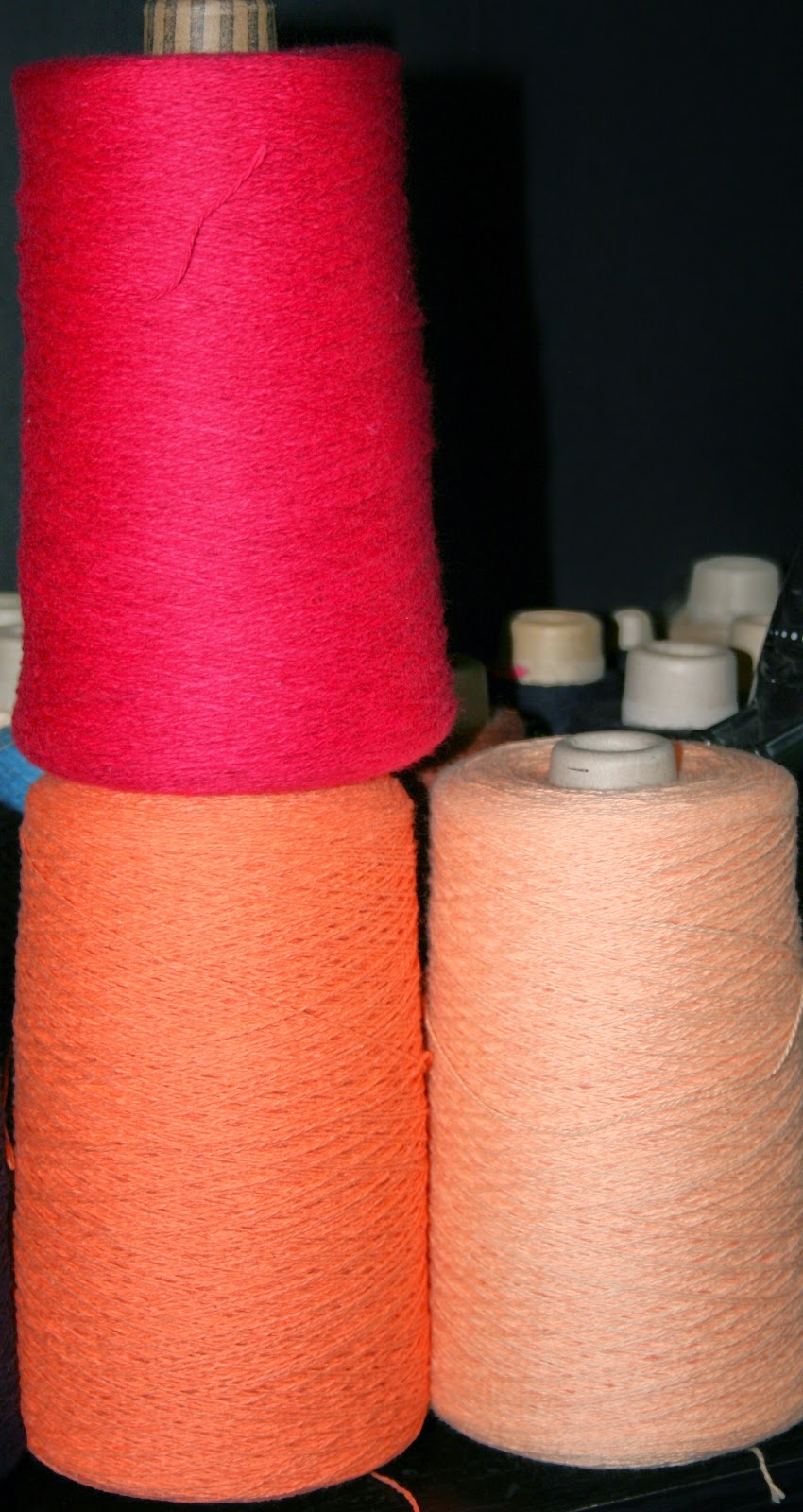Weaving History - Space makes the Difference
I focused last week on overshot coverlets as opposed to quilts. For a brief distinction a coverlet is woven, a quilt is not. Quilts and coverlets co-exist in equal appreciation during the Nineteenth Century, but as the Twentieth Century progressed, quilts became more popular and coverlets less popular.
Part of the reason is simply the time it takes to weave a coverlet let alone setting up the loom. To put this in perspective, it takes me roughly twelve hours from warping the loom to weaving the cloth to finishing off the edges for me to make the two scarves below. Both are around two yards in length.
These scarves were done on my rigid heddle loom at a 7.5 dpi. What slowed them down was the pick-up stick pattern.
On Helen the loom, I'm weaving at a sixteen dpi plus weaving a tighter weave so it takes longer. Take a look at the two projects below. First is the purple scarf from above before it is washed.
Looking closely at it, you can tell that there is plenty of space. That lighter brown that you see is actually the carpet where I stretched it out to measure it before putting it into the wash. The photo below is currently on Helen the loom.
As you can see, there is little to no space between the weft and warp. Also, as a twill fabric, the threads tend to pack in a bit more than they do in a plain weave fabric, even with using a pick-up stick. A plain weave is the most basic form of weaving. It is also called a tabby weave. The plain/tabby weave is one thread up one thread down as the weft passes through.
A twill weave (seen below) has two threads up and two threads down as the weft passes through. This type of twill is called a 2/2 Twill. There are other types of twills, but with a counter-balance, 4-shaft loom, I am unable to weave them.
Because the threads travel over and under two rows, they are able to pack in a little tighter than when they pass over and under only one thread at a time. Plain weave provides strength; twill provides flexibility.
The space, both how closely the warp threads are set as well as how closely the weft can be packed determines how quickly the weaving takes.
Part of the reason is simply the time it takes to weave a coverlet let alone setting up the loom. To put this in perspective, it takes me roughly twelve hours from warping the loom to weaving the cloth to finishing off the edges for me to make the two scarves below. Both are around two yards in length.
These scarves were done on my rigid heddle loom at a 7.5 dpi. What slowed them down was the pick-up stick pattern.
On Helen the loom, I'm weaving at a sixteen dpi plus weaving a tighter weave so it takes longer. Take a look at the two projects below. First is the purple scarf from above before it is washed.
Looking closely at it, you can tell that there is plenty of space. That lighter brown that you see is actually the carpet where I stretched it out to measure it before putting it into the wash. The photo below is currently on Helen the loom.
As you can see, there is little to no space between the weft and warp. Also, as a twill fabric, the threads tend to pack in a bit more than they do in a plain weave fabric, even with using a pick-up stick. A plain weave is the most basic form of weaving. It is also called a tabby weave. The plain/tabby weave is one thread up one thread down as the weft passes through.
 |
| Plain or Tabby Weave |
 |
| 2/2 Twill Weave |
The space, both how closely the warp threads are set as well as how closely the weft can be packed determines how quickly the weaving takes.





Comments
Post a Comment